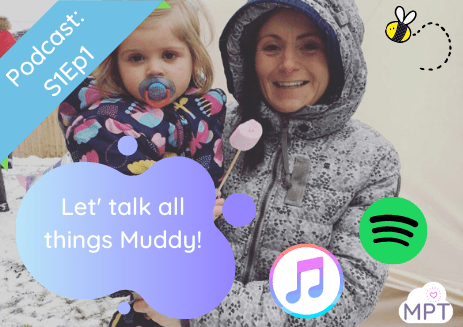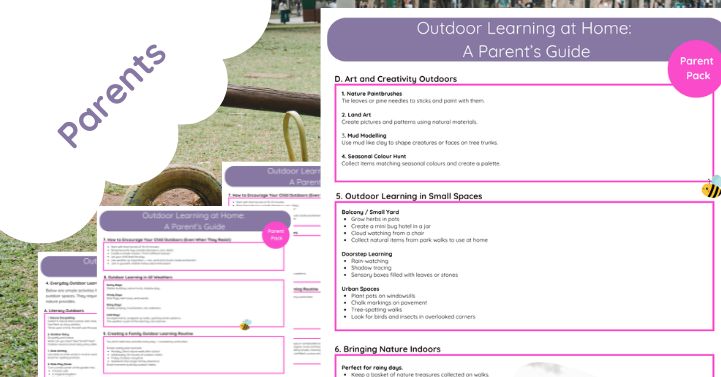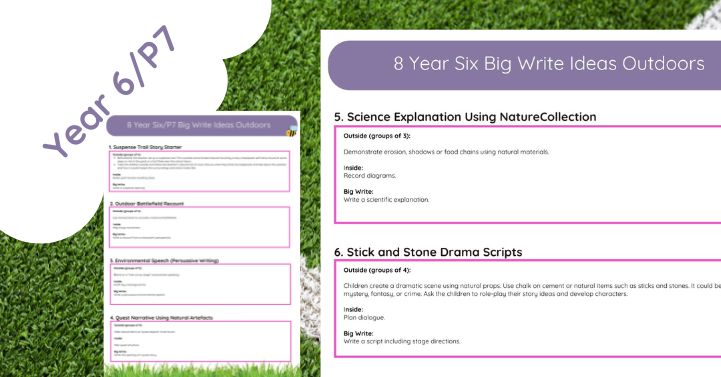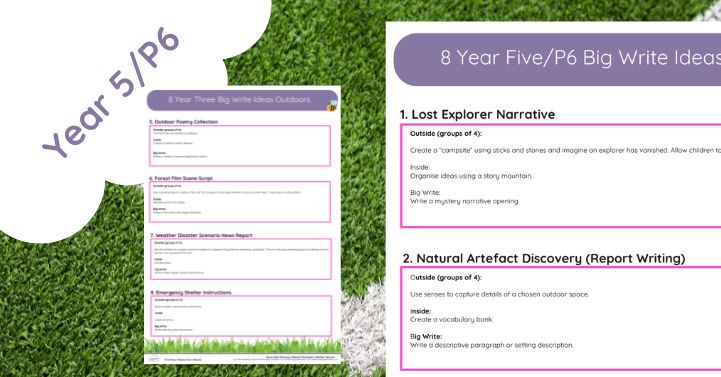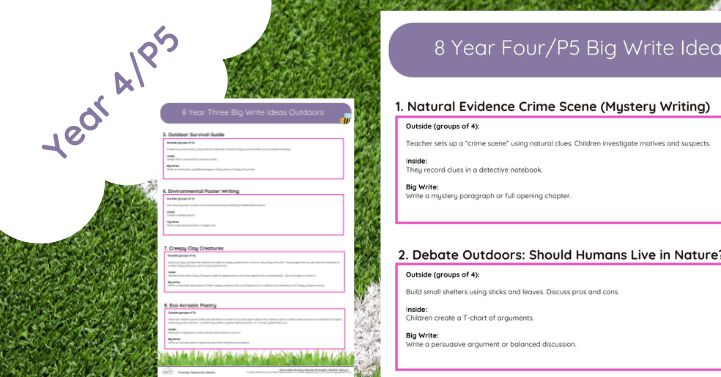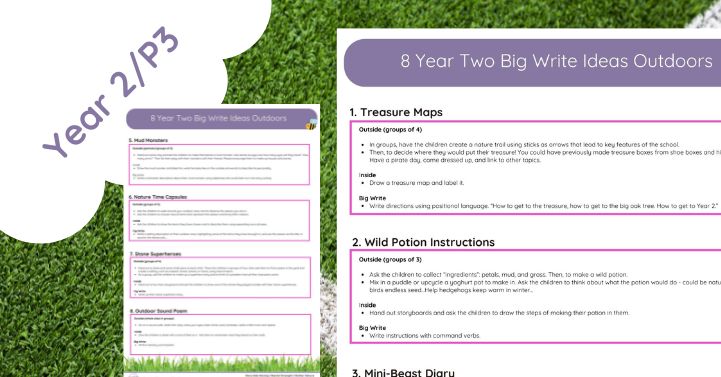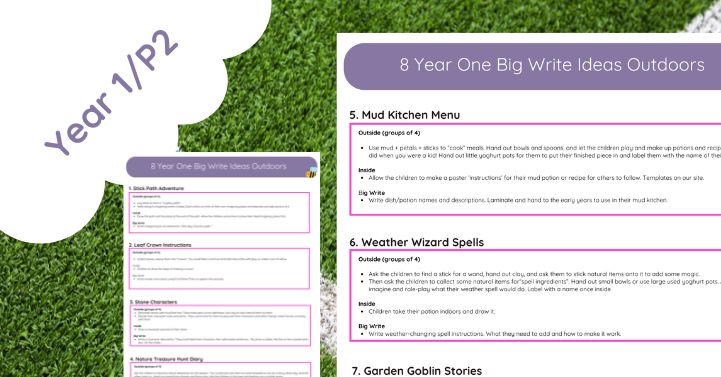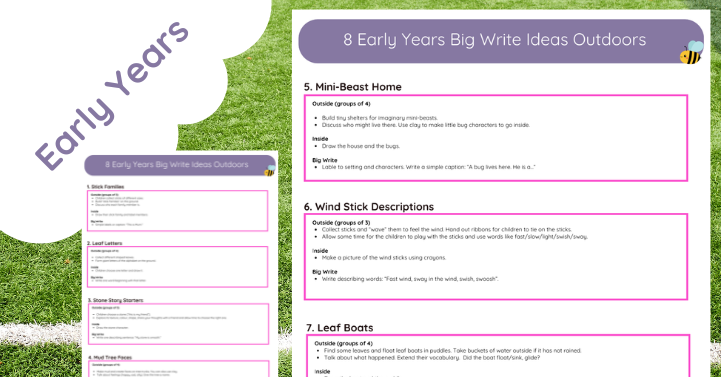Transcript
#1 Let’ talk all things Muddy!
Thu, 04/24 11:23AM · 20mins
AI Notes
Summary
Sarah Seaman, the chief Muddy Puddle teacher, introduces the Muddy Puddle teacher approach in this inaugural podcast episode.
Sarah shares her background as a former teacher with 12 years of experience, including five years as a forest school teacher. She explains how she created the approach after recognizing the limitations of traditional classroom teaching and the need for more interactive, outdoor learning experiences.
The Muddy Puddle teacher approach is built on three core principles, known as the ‘three muddy m’s’: Mental strength, More kids moving, and Mother Nature. Sarah emphasises that this approach is not just about outdoor learning but has evolved into a sustainable teaching methodology that exclusively uses upcycled and natural materials.
Sarah discusses how the approach has grown, with thousands of schools now following their methods. The organisation has developed a team of teachers creating content for their website, and before COVID-19, Sarah conducted in-person training sessions across the country. Now, they’ve transitioned to fully online training.
The approach is designed to be flexible and practical, removing common barriers to outdoor learning such as paperwork and cleanup. Sarah highlights that two research schools are currently conducting studies on the approach, with results expected the following September.
Chapters
Introduction to the Muddy Puddle Teacher Approach
Sarah Seaman introduces herself as the creator of the Muddy Puddle teacher approach, sharing her background as a teacher and forest school instructor for 12 years.
Development and Evolution of the Approach
Sarah explains how she developed the approach over two years, initially focusing on outdoor mathematics teaching and gradually expanding to other subjects and age groups.
Core Principles: The Three Muddy M’s
Sarah outlines the three fundamental principles: Mental strength (focusing on children’s mental health), More kids moving (promoting active learning), and Mother Nature (using natural and upcycled resources).
Implementation and Resources
Sarah describes how the approach can be implemented freely or through their subscription service, emphasizing its accessibility and flexibility for different educational settings.
Research and Future Developments
Sarah announces ongoing research in two schools, with results expected the following September, and highlights successful implementations in flagship schools like Parnell Hall School.
Action Items
Sarah Seaman announces upcoming podcast episodes featuring guest speakers including Greg Botchel and children campaigning for plastic-free education
Sarah encourages educators to try the 14-day free trial of their resources on www.muddypuddleteacher.co.uk
Sarah announces the completion of research studies from two research schools by next September.
Sarah invites educators to join their social media communities on Facebook and Instagram for ongoing support and resources
Transcript
The Muddy Puddle Teacher Podcast. I am Sarah Seaman, Chief Muddy Puddle Teacher and this is episode one and the subject and topic for conversation.
This week will focus on the multi-podal teacher approach. So we’re hoping that.
a lot of these podcasts are going to be really helpful to you. We’re going to have guest speakers on. We’ve got
We’re a doctoral author and early use teacher on his way. We have some children on board who are campaigning for plastic-free education, and many other people have organised to join our Muddy podcast. But first of all, we need to teach you all about what the Muddy Puddle teacher approach is all about, how we were created and what our ethos and mission is.
So the Muddy Puddle teacher approach was created by me, Sarah Seaman. I’m a mom and I was a teacher for around 12 years. I started off being a forest school teacher and I did that for about five years on and off my regular teaching. So I was in early years, year one, year two and my Friday job was to also teach forest schools throughout the school. And I did that, like I said, for five years. I loved it, got so much from it. And I wanted to do more of it, but my hands were tied because I had the curriculum to teach basically like the rest of us do. I mean, if I could have spent all day outside doing forest schools, I totally would have done it. But I was just sort of searching and seeking for other ways for us to teach a little bit differently. The sit-down, teaching at desks, it works for me sometimes. And for some things, but then for other things, I thought, ‘ If I’d only had the time, I probably could have made this lesson more interactive for those children who needed it. ‘ And actually, for the majority of the children, they need to be moving and doing things in different outdoor ways. So that’s why I left, basically, to try and be a bit more experimental with what I absolutely have so much passion for.
And I had two young girls at a time, so it made total sense. For two years, I basically taught outside, starting off with forest schools and eventually doing something that wasn’t really like forest schools. I basically really focused on teaching the curriculum outside and how I could get each year groups learning outside. My initial focus was on maths, and I would do a bit of early years maths outside with the shape and the measure, a bit of place value, how the children could go and collect 10 sticks and how much they got from that rather than actually sitting down and getting cubes out. You know, just giving them this sort of like in-depth learning of can you go and get me 10 sticks? Not can you count me out 10 cubes? Can you go and get me 10 sticks? Cause I need you to then go and make me a square. And all the links that just came in would just, just was beautiful. And then I focused on key stage two with the help of some head teachers and moved on from there. And then I got myself a fabulous team together. Just something that this approach really does bring is tribe of people. And we certainly do have a tribe of people at the muddy puddle teacher. We have teachers now that create content for our website. And it has taken about a year of training for all the staff to sort of get into the swing of things, how we only use natural and upcycle resources. But we now have a wonderful team together.
And before COVID, I was going up and down the country training everybody on the muddy puddle teacher approach.
But that sort of put a halt to it. And we’re fully online now. So that is our journey so far.
So what is the muddy puddle teacher approach? So as I was outside, I soon realized that there are many difficulties to teaching outside. It’s not quite as simple as inside because before you know it, there’s rain, there’s snow, there’s seasons, there’s changes in natural resources. What can you take out that you can’t get messy, that you can’t get wet? There can be some differences as I like to say, not difficulties. So I focused really hard about what actually practically a teacher can take outside. And it not create you extra effort and extra fuss because to be perfectly honest, we’ve got enough on our plate, haven’t we?
And if I didn’t make outdoor learning easy to do, then I knew it wouldn’t get done. I’ve sat there over so many training sessions and so many staff meetings and being told, yeah, this is the new thing that we do. And then we get there and we think this is not practical. We’ve got to put this in place where I’ve got time to do this. I’ve got a million more things on my plate. The idea of the muddy puddle teacher approach is it actually makes your life easier. And that’s because there’s no market. because I’ve removed all paper and clipboards out of our approach and there’s no tidying up because we only use natural resources. So the muddy puddle teacher approach is not just an outdoor learning approach, I think we were, I think we’re now a sustainable teaching approach where we only use upcycled and natural materials. And the big thing about us is that I then created an ethos and the ethos is very important because it keeps us like-minded people together. It also reminds us that why we do what we do, why we are the muddy puddle teachers, because we believe that we’ve got to teach the curriculum, but you can teach the curriculum in a nurturing way.
You don’t have to do it like everybody else, you do have to do what’s on your curriculum, but you don’t have to do it the same way as everybody else. And I believe in the muddy puddle teacher away and so do thousands of other schools that follow us. And the ethos is very important. And this is how we remind ourselves and keep ourselves to the muddy puddle approach and to make sure we know what the value is of our approach. So these are called the three muddy m’s, number one being mental strength. So anyone that follows us on our Facebook pages, Twitter pages and whatnot will know how passionate I am about mental strength and about being really careful about the steps and and the paths we take with our teaching that could just alter that mindset of one of our children in our class and keeping that positive mentality, which is really hard sometimes when you’ve got so much pressure on your shoulders.
But I think what’s great about our schools is that not only do the teachers love our ethos, so do the head teachers and they teach just like this too and so do the management and so do the governors and so do the parents and it just filters through this positivity that yeah we are here to teach this curriculum but we’re going to teach it understanding the children’s mental health and strengthening that as we go. So that’s one area we focus on a lot and the second one is more kids moving.
So yeah when I first started teaching 12 years ago there weren’t many computers around really. I mean like I was a new one at the time and the children like a couple of them had laptops but they didn’t really access it and they were only five and six so they weren’t really using it very much. By the end of my career every single child had got a phone an iPad maybe both, laptops you know technology coming out of their ears basically. So I think it’s really important to take notice of that and note that the play has changed. Play is not like it was at home as it is now and we’ve got Greg Botchel coming on the show soon he’s absolute advocate for it. If you need to go and look up Greg do it now he’s amazing but you’ll be inspired by him when he’s on the show next. And the fact that the play has changed means that we’ve got to be a lot more play-based in school. We should have been anyway but we are and need to be a lot more play-based and the muddy puddle teacher approach only encourages that we don’t like I say a rule is that if there’s no work she’s no paper outside we don’t just think of the mental strength of the child we’re thinking of the mental strength of the teacher as well who also needs to go outside who also needs to reduce workload because they need to teach and this kind of way of teaching is so powerful.
So yeah more kids moving so all of our sessions are interactive and we don’t encourage sitting around circles we may as well sit down in circles inside if that’s what you want to do instead we promote lots of active based learning such as the muddy walk and talk so if you have got circle time activities go outside think out the box do it do the muddy walk and talk it’s so cool. The children you stand in the middle you give them a subject to talk about and the children walk around the outside of it that is a really good one. We also do muddy welly walks where the children you go on a welly walk for 10 minutes and the children have got some conversations to talk about as you’re doing it we do the jump in the jump out we do sensory circles to help children open up through things like that and story times yeah you know they’re perfect for indoors they’re perfect outdoors and nice days but if you want in some interactive sessions then that’s what we’re here to do and because we only use natural and up to cycle resources anybody across the planet can do this anybody in any setting can do this you can all get some sticks you can all find some mud you can all find stones so we are across the board and that was always my aim was the fact that a lot of the time our approach is done.
free by people and that’s absolutely fine. If they want our help and want to subscribe with this, then brilliant. That’s what we’re to do, make your life easier. But if not, use it for free and just go out there.
And you know, we’ve got a 14-day trial for some people, that’s enough. They’ve got the ideas and off they go. But yeah, I mean, anyone can do it. So the final model, and we’ve had mental strength, we’ve had more kids move in. And the last one, of course, is Mother Nature. And so making sure that every session, we stick to the fact that we’re either using natural resources or upcycled materials. There is so many reasons for that. And at first, I thought, you know, I’m going to take my whiteboard and pencil out. I can do this. And you sort of can. Yeah, you can. But then you’ve got more effort for yourself. If that’s what you want to do, you’re going to have to clear all that stuff up. And you’re going to have to wipe it all down afterwards. And actually, what are we teaching the children by doing that? We’re not adding any value to going outside. We’re not adding any value to the fact that these children need to really think about their planet and they need to think about their future.
And I love that when the children get really good and the teachers are using what’s out there. So let’s say that they’re using sticks to make a storyboard. They’ve got the stones out to do fractions. They’re making clocks out of stones and leaves and learning time. They start to get really imaginative with it. And I really do believe that some child out of the muddy puddle teacher approach is going to be creating their next sustainable material that’s going to replace plastic. I’m pretty sure of it because we’re giving them so much time, so many skills into upcycling, reusing. Their imaginations are going to be wild by the time they finish primary school.
So yeah, they’re the three muddy m’s. I can’t speak enough about these. They’ve naturally come in. They’ve naturally been very powerful. And they naturally are something we use every session. Now, the muddy puddle teacher approach is so flexible. And we are not here to create rules around how people use this approach. I just think that’s a headache. Every school is different. Every child is different. Every teacher is different. It can be an outdoor approach that schools use. It can be something they start using inside as well. I think the muddy puddle teacher approach has that effect on people. You start going outside and using these. You then realize that you’ve got to do a lot more outdoor learning. You then start to see that actually those conquers could have been used in the math sessions. Do I really need to order new blocks? Do I really need to order a new set of plastic polymers? Not really. I can use stones, can’t I? And we’re sort of saving plastic. We’re saving money as we do it. And we’re teaching the children really good methods of sustainability while we’re going. There’s so much science involved as well.
It’s amazing to see some of our flagship schools, such as Parnell Hall School, showing us how the children are learning about citrus and evergreen. They know the names of the plants around them. The wealth of knowledge that’s coming out of this is incredible.
We now have two research schools that are creating research around this approach. So that will be coming next year. Next September they will have finished that year’s with research. But we may continue that for another year. And that is with one whole school and a nursery unit. And we will be continuing our research. It’s exciting times for us.
And so that is us, that is the muddy puddle teacher approach, that is what we’re about. And I hope you got a lot from that. And again, if you want to use our approach for free, go for it. Use the three muddy ends every lesson, try and think about mental strength, ways you can do that, making your kids move more and how you can incorporate mother nature more into your teaching. All are going to be beneficial. And next week, we are going to be having Greg Botrell on. So me and Greg have known each other for quite a while. I did the play to go conference, did a seminar there for him in Devon, which he leads with, he’s got a massive following, it’s going to be really exciting to have him on. He’s going to talk about what he’s doing, because he’s got an exciting few projects coming up and his thoughts and feelings about outdoor learning.
And if you want more, so we have a massive 50k following on Facebook. On the early years, muddy puddle group, we’ve got a Key Stage 2 one and SCM one. We also have our Facebook page forward slash muddy puddle teacher. We have an Instagram account, where we share a lot of our pictures and so do our flagship schools. And there’s our website www.buddypuddleteacher.co.uk, sign up for a 14 day free trial to all of our resources. You also, there’s our training on there as well. And everybody absolutely loves our training. Honestly, it’s really going to revamp your career and revamp your school and just make an absolute difference to you all.
And there’s, like I said, all the resources on there too. So we’re going to be covering lots of things, not just about outdoor learning. We have the three muddy ends that we focus on. So there’s going to be lots of mental health talk about you as a teacher, about the children, about the right decisions, the right paths we take, so that we have confident, happy teachers and children who are ready to learn and eager to get out there.
So have a great day.
Lovely muddy day everybody, bye!


